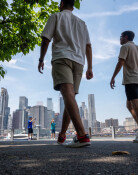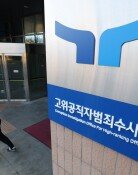Is Korea safer since the Seongsu Bridge disaster 30 years ago?
Is Korea safer since the Seongsu Bridge disaster 30 years ago?
Posted October. 22, 2024 08:13,
Updated October. 22, 2024 08:13
Yesterday marks the 30th anniversary of the Seongsu Bridge disaster. On Oct. 21, 1994, the north side of the Seongsu Bridge collapsed, plunging a city bus and several cars into the river and killing 32 people, including eight students from Muhak Girls' High School on their way to school. The bridge, only 15 years old at the time, collapsed in an instant, causing widespread shock.
The technical cause of the Seongsu Bridge collapse was fatigue from heavy loads, which led to cracks. However, these cracks would not have occurred without the cumulative impact of poor construction at each stage. The entire process—designing, supervising, constructing, and maintaining the Seongsu Bridge—was marred by a disregard for safety. This led to failures in adhering to basic standards and corrupt practices to reduce construction time and costs. The construction company did not follow the design plans, resulting in shoddy work, while the officials responsible for supervision turned a blind eye. The city of Seoul failed to prevent the collapse by neglecting maintenance and repairs, even after the danger was detected. It was a tragedy born from the absurdities of our society.
Thirty years after the Seongsu Bridge disaster, Korea still struggles to shake off its 'accident republic' stigma. In recent years, the country has been plagued by unforgettable disasters. In October 2022, 159 people were crushed to death in Itaewon, and in June, 23 people were killed in a fire at the Arisel plant in Hwaseong, Gyeonggi Province. Malpractices on construction sites persist. In January 2022, a high-rise apartment building under construction collapsed in Gwangju, killing six workers, and in April 2023, the underground parking lot of an apartment building in Geomdan New City, Incheon, collapsed. These accidents occur due to poor design, supervision, and construction practices, such as the use of water-diluted concrete and missing rebar, which continue to recur.
Despite repeatedly experiencing disasters in our society, following the collapse of the Seongsu Bridge, we have focused only on finding those responsible to publicly vent our anger, without thoroughly reflecting on or making efforts to prevent recurrence. In fact, our mentality of 'blind trust,' which downplays safety, remains unchanged, leading me to wonder whether frequent accidents have dulled our sense of vigilance. At the joint memorial ceremony for the victims of the Seongsu Bridge collapse, Kim Hak-yoon, a representative of the bereaved families, said, “If our society had been more faithful to the basics, there would have been no broken hearts of hope-filled students, parents, and bereaved families.” Safety is never to be taken for granted. As soon as we neglect the basics, accidents like this can happen at any time.







